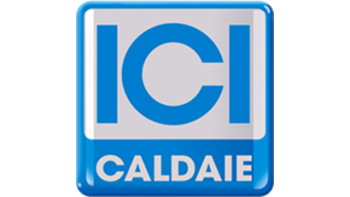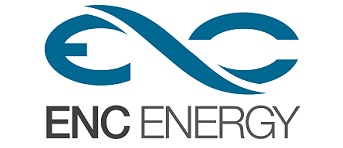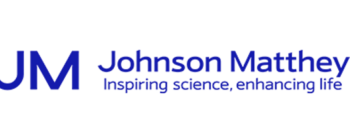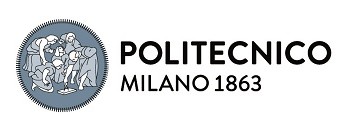In this section you can find uploaded all the public deliverables. Share the knowledge!
FIRST YEAR
D1.2 Project Internet platform - Website (PUBLIC)[<a href="http://www.bionicoproject.eu/download/WP1/Deliverables/BIONICO-WP1-D12-DLR-POLIMI-01122015.pdf">download here</a>]
The first version of the public website of the BIONICO project is available online at the following address: www.bionicoproject.eu. The website is online from the 1st of December.
The website was built using the web software WordPress (available online at https://wordpress.org/).
The website was built using the web software WordPress (available online at https://wordpress.org/).
D1.11 Annual data report, year 1 (PUBLIC)
[<a href="http://www.bionicoproject.eu/download/WP1/Deliverables/BIONICO-WP1-D111-DLR-POLIMI-20160512.pdf">download here</a>]
The Annual Data Report was submitted to the EU through TEMONAS online knowledge management tool on the 12th of May 2016.
D2.2 Definition of the reference case (PUBLIC)
[<a href="http://www.bionicoproject.eu/download/WP2/Deliverables/BIONICO-WP2-D22-DLR-POLIMI-20160513-v05_2.pdf">download here</a>]
This report summarizes the reference cases to be adopted in BIONICO to benchmark the innovative concept developed within the project. Two reference cases are identified: the first case is based on a steam-methane reformer (SMR) reactor, while the second one on an autothermal reformer (ATR). These two cases reflect the state of the art of hydrogen production from biogas as already discussed in the deliverable D2.1 “Industrial Specifications for a catalytic membrane reactor to produce hydrogen from biogas”, being the steam methane reformer the most diffused configuration. The two reference cases will be adopted as term of comparison in BIONICO to evaluate the potentiality of the developed innovative membrane reforming reactor in terms of performances and hydrogen production cost.
D2.4 Industrial specification (PUBLIC)
[<a href="http://www.bionicoproject.eu/download/WP2/Deliverables/BIONICO-WP2-D24-DLR-AH-20160413-v04.pdf">download here</a>]
Potential market applications for membrane reactor technology has been evaluated and described in terms of possible biogas producers and possible final consumers of the hydrogen produced, considering a hydrogen production target of 100 kg/day. The potential markets identified consider different industrial applications like glass production, metal processing, electronic industry, food industry and hydrogen fuelling stations. Among these applications, a small hydrogen fuelling station (80kg/day) has been selected as potential application of Bionico project.
A preliminary configuration of the system to produce hydrogen from biogas with catalytic membrane reactor technology has been defined including plant specifications, general considerations for the design (location, onsite conditions, raw material specifications, noise limitations) and a preliminary process design.
The process design includes general considerations (location, onsite conditions, raw material specifications, noise limitations) and a description of the process to produce hydrogen from biogas considering the balance of plant required represented on a schematic plant layout.
The process proposed does not require the upgrading of biogas to biomethane, performing the direct conversion of biogas to hydrogen. Nevertheless, a pre-cleaning stage is required to remove hydrogen sulphide and other components of the biogas that could cause catalyst and membranes poisoning reducing the process lifetime.
A preliminary configuration of the system to produce hydrogen from biogas with catalytic membrane reactor technology has been defined including plant specifications, general considerations for the design (location, onsite conditions, raw material specifications, noise limitations) and a preliminary process design.
The process design includes general considerations (location, onsite conditions, raw material specifications, noise limitations) and a description of the process to produce hydrogen from biogas considering the balance of plant required represented on a schematic plant layout.
The process proposed does not require the upgrading of biogas to biomethane, performing the direct conversion of biogas to hydrogen. Nevertheless, a pre-cleaning stage is required to remove hydrogen sulphide and other components of the biogas that could cause catalyst and membranes poisoning reducing the process lifetime.
D5.1 Preliminary design of the lab scale membrane reactor (PUBLIC)
[<a href="http://www.bionicoproject.eu/download/WP5/Deliverables/BIONICO-WP5-D51-DLR-TuE-20160421-v01.pdf">download here</a>]
This deliverable reports the design of the lab scale membrane reactor. Particular attention is given to the position and number of the membranes inside the reactor to improve the recovery and conversion.
D5.4 First model of novel reforming membrane reactor system (PUBLIC)
[<a href="http://www.bionicoproject.eu/download/WP5/Deliverables/BIONICO-WP5-D54-DLR-TuE-20160907-v2.pdf">download here</a>]
A first modelling is performed for the fluidized bed membrane reactor for biogas steam reforming. A one dimensional two-phase fluidization model is considered for the simulation of fluidized bed membrane reactor. Some first base case simulations results show that the system is mass transfer limited, therefore to accurately simulate the lab scale reactor the mass transfer is of high importance to be well described.
Furthermore the influence of the presence of the dry reforming reaction is studied. Currently the kinetics for the catalyst used in the final process is still being studied. A rate equation for DR is assumed to describe the dry reforming kinetics. The results show that the production of hydrogen in the first part of the reactor increases however the overall equilibrium conversion of methane is lowered.
For the final model the experimentally obtained kinetics will be implemented in the model. Furthermore a description of the mass transfer resistance near the membrane will be included. To validate the model experimental results of a single membrane reactor and the lab scale reactor will be used.
Furthermore the influence of the presence of the dry reforming reaction is studied. Currently the kinetics for the catalyst used in the final process is still being studied. A rate equation for DR is assumed to describe the dry reforming kinetics. The results show that the production of hydrogen in the first part of the reactor increases however the overall equilibrium conversion of methane is lowered.
For the final model the experimentally obtained kinetics will be implemented in the model. Furthermore a description of the mass transfer resistance near the membrane will be included. To validate the model experimental results of a single membrane reactor and the lab scale reactor will be used.
D5.5 Final model of novel reforming reactor system (PUBLIC)
[<a href="http://www.bionicoproject.eu/download/WP5/Deliverables/BIONICO-WP5-D55-DLR-TuE-20170518-v1.pdf">download here</a>]
In this deliverable the model of the novel membrane reactor developed in the BIONICO project is presented. The developed model is validated with steam reforming experiments in a lab scale fluidized bed membrane reactor. The experiments and results are already presented in deliverable D5.3. The first model developed in D5.4 is reviewed and updated to account of the mass transport from the bulk of the system to the membrane, also known as concentration polarization.
The 1D fluidized bed membrane model is extended with a film layer description of concentration polarization. Permeation experiments show that the thickness δ which describes the mass transfer resistance can be fitted. The results also show that the flow conditions significantly affect the mass transfer resistance. The delta used to validate the model is obtained from a fitting to one base case experiment and shows to predict the other experiments accurately.
The model is then used to optimize and scale up the system. An important design parameter is introduced, the load to surface ratio. Showing that higher temperatures and pressures are beneficial. The scale up is dependent on the thickness of δ if delta changes significantly with scale up this can have significant effects on the predictability of the model. Scale up experiments can give a more accurate prediction of the behaviour of δ at higher pressures and different flow conditions. Autothermal conditions increase the conversion, however give lower hydrogen recovery.
The 1D fluidized bed membrane model is extended with a film layer description of concentration polarization. Permeation experiments show that the thickness δ which describes the mass transfer resistance can be fitted. The results also show that the flow conditions significantly affect the mass transfer resistance. The delta used to validate the model is obtained from a fitting to one base case experiment and shows to predict the other experiments accurately.
The model is then used to optimize and scale up the system. An important design parameter is introduced, the load to surface ratio. Showing that higher temperatures and pressures are beneficial. The scale up is dependent on the thickness of δ if delta changes significantly with scale up this can have significant effects on the predictability of the model. Scale up experiments can give a more accurate prediction of the behaviour of δ at higher pressures and different flow conditions. Autothermal conditions increase the conversion, however give lower hydrogen recovery.
SECOND YEAR
D1.12 Annual data report, year 2 (PUBLIC)[<a href="http://www.bionicoproject.eu/download/WP1/Deliverables/BIONICO-WP1-D112-DLR-POLIMI-20170614_v1.pdf">download here</a>]
The Annual Data Report was submitted to the EU through the TRUST tool (Technology Reporting Using Structured Templates) on the 12th of June 2017.
D3.7 Development of a fluidizable biogas reforming catalyst (PUBLIC)
[<a href="http://www.bionicoproject.eu/download/WP3/Deliverables/BIONICO-WP3-D37-DLR-JM-20171027-v2.pdf">download here</a>]
This work package is focused on the development of a fluidizable autothermal reforming catalyst that can achieve the necessary activity to allow the BIONICO system to produce the target of 100 kg/day of hydrogen. The catalyst development activities have focussed on improving the catalyst formulation with the optimization of dopants and support and on the scale-up of the preparation method.
D5.2 Integrated catalyst, membranes and sealing in lab scale membrane reactor (PUBLIC)
[<a href="http://www.bionicoproject.eu/download/WP5/Deliverables/BIONICO-WP5-D52-DLR-TuE-20161020-v4.pdf">download here</a>]
The report presents the integration of the membrane and catalyst in the lab scale reactor. The selection of Membrane and catalyst not only depends on the single performance of the components, furthermore the components can be affected by H2S, a trace component in the biogas. In this deliverable both components are integrated in the lab scale reactor to determine the membrane stability. The performance of the membrane is tested for single gas permeation at high temperature [500°C, 550°C]. Furthermore the performance of the membrane PdAg and PdAgAu is evaluated with the presence of different H2S contents simulating the Biogas conditions after gas cleaning. These results give information which allows the design of the optimal membrane module.
B-L1 and E507 are both brought in contact with respectively catalyst support and loaded catalyst under fluidization. For both the performance and stability of the H2 permeance was measured. The H2 permeance slightly increased when the membranes where brought under fluidization due to surface roughening. No interaction between the catalyst and the membrane active layer is suspected. However the selectivity decreases when the membrane is brought under fluidization conditions with the loaded catalyst. In both cases the appearance of the surface of the membrane was more dull then the fresh membrane layer.
The membranes E505 PdAg, E505 PdAgAu and E506 PdAgAu were exposed to different amounts of H2S during hydrogen permeation. The results show that the presence of H2S decreases the hydrogen flux through the membrane. For the PdAg and the PdAgAu membrane with 5% of gold the decrease did not change with increasing content of H2S. The PdAgAu with 7% of gold had a relatively smaller decrease on exposure with H2S. However when increasing H2S concentration the membrane reached a similar relative decrease as the other two membranes.
This work will be expanded for the next deliverable (D5.3) in M18. The report is expected to include the following points by month M18:
• Integration of catalyst and membranes containing gold.
• Long term test for both stability and selectivity of the membrane
• Post characterization of the membranes
• Expansion of the work with H2S
• Post characterization of the membranes exposed to H2S
• Catalyst activity and stability
B-L1 and E507 are both brought in contact with respectively catalyst support and loaded catalyst under fluidization. For both the performance and stability of the H2 permeance was measured. The H2 permeance slightly increased when the membranes where brought under fluidization due to surface roughening. No interaction between the catalyst and the membrane active layer is suspected. However the selectivity decreases when the membrane is brought under fluidization conditions with the loaded catalyst. In both cases the appearance of the surface of the membrane was more dull then the fresh membrane layer.
The membranes E505 PdAg, E505 PdAgAu and E506 PdAgAu were exposed to different amounts of H2S during hydrogen permeation. The results show that the presence of H2S decreases the hydrogen flux through the membrane. For the PdAg and the PdAgAu membrane with 5% of gold the decrease did not change with increasing content of H2S. The PdAgAu with 7% of gold had a relatively smaller decrease on exposure with H2S. However when increasing H2S concentration the membrane reached a similar relative decrease as the other two membranes.
This work will be expanded for the next deliverable (D5.3) in M18. The report is expected to include the following points by month M18:
• Integration of catalyst and membranes containing gold.
• Long term test for both stability and selectivity of the membrane
• Post characterization of the membranes
• Expansion of the work with H2S
• Post characterization of the membranes exposed to H2S
• Catalyst activity and stability
D5.3 Report on Characterization and Validation of the lab scale reformer (PUBLIC)
[<a href="http://www.bionicoproject.eu/download/WP5/Deliverables/BIONICO-WP5-D53-DLR-TuE-20170226-v3.pdf">download here</a>]
For the validation of the lab scale reformer, experiments have been carried out with a lab scale fluidized bed membrane reactor. The lab scale reformer integrated a single membrane tube (E619) supplied by TECNALIA together with the 2nd Generation BIONICO catalyst supplied by JM. The membrane was sealed with the Swagelok sealing method and had membrane surface area of 64.17 cm2.
Permeance test where performed at different temperatures to characterize the membrane flux and selectivity. An activation energy of 9.26 kJ/mol with a pre-exponential factor of 8.74 ∙ 10-3 mol m-2 s-1 pa-0.5 have been measured. The initial ideal perm-selectivity was found to be 18000 at 545 °C and 1 bar pressure difference.
To experiments performed to validate the system are methane steam reforming and Biogas steam reforming. In all experiments the steam to methane ratio was kept 3. The system was tested at different CO2/CH4 ratios, pressures and temperatures.
The CO2/CH4 ratio showed a decrease in methane conversion, due to the equilibrium effects of CO2 as a product. As expected, the selective removal of hydrogen through the membrane shifted the equilibrium to higher methane conversions. However the overall trend also with selective removal showed still a decrease with increasing CO2 in the feed. The effect of the CO2/CH4 ration on the separation factor could not be measured due to the system dilution. The increase of CO concentration did not seem to influence the separation via the membrane at 485 °C. The hydrogen purity showed a decrease when more CO2 was present in the feed.
The pressure was varied between 2 and 5 bar. The equilibrium conversion is decreased with increasing pressure; however, when hydrogen is selectively extracted, this decrease is reduced. More membrane area and thus more hydrogen permeation would result in an increase of conversion with pressure. The hydrogen separation factor and HRF both increase with pressure. A slight decrease in purity was obtained with the increase of pressure.
The temperature improves the equilibrium conversion due to the overall endothermic nature of the system. Selective removal of hydrogen shifts the equilibrium. The separation factor is not changed a lot however due to the increase in methane conversion with temperature the HRF is increased significantly. The hydrogen purity is increased due to the increase in permeability of hydrogen.
The system showed stable behaviour during the experiment. Although the nitrogen permeance of the membrane was slightly increased over the experimental period. The maximum hydrogen purity obtained was 99.88% at 535 °C, maximum amount of CO measured in the permeate stream was 184 ppm. However it should be noted that the tested period was relatively short and long term data is required to show the system stability.
Permeance test where performed at different temperatures to characterize the membrane flux and selectivity. An activation energy of 9.26 kJ/mol with a pre-exponential factor of 8.74 ∙ 10-3 mol m-2 s-1 pa-0.5 have been measured. The initial ideal perm-selectivity was found to be 18000 at 545 °C and 1 bar pressure difference.
To experiments performed to validate the system are methane steam reforming and Biogas steam reforming. In all experiments the steam to methane ratio was kept 3. The system was tested at different CO2/CH4 ratios, pressures and temperatures.
The CO2/CH4 ratio showed a decrease in methane conversion, due to the equilibrium effects of CO2 as a product. As expected, the selective removal of hydrogen through the membrane shifted the equilibrium to higher methane conversions. However the overall trend also with selective removal showed still a decrease with increasing CO2 in the feed. The effect of the CO2/CH4 ration on the separation factor could not be measured due to the system dilution. The increase of CO concentration did not seem to influence the separation via the membrane at 485 °C. The hydrogen purity showed a decrease when more CO2 was present in the feed.
The pressure was varied between 2 and 5 bar. The equilibrium conversion is decreased with increasing pressure; however, when hydrogen is selectively extracted, this decrease is reduced. More membrane area and thus more hydrogen permeation would result in an increase of conversion with pressure. The hydrogen separation factor and HRF both increase with pressure. A slight decrease in purity was obtained with the increase of pressure.
The temperature improves the equilibrium conversion due to the overall endothermic nature of the system. Selective removal of hydrogen shifts the equilibrium. The separation factor is not changed a lot however due to the increase in methane conversion with temperature the HRF is increased significantly. The hydrogen purity is increased due to the increase in permeability of hydrogen.
The system showed stable behaviour during the experiment. Although the nitrogen permeance of the membrane was slightly increased over the experimental period. The maximum hydrogen purity obtained was 99.88% at 535 °C, maximum amount of CO measured in the permeate stream was 184 ppm. However it should be noted that the tested period was relatively short and long term data is required to show the system stability.
D6.1 Definition of the BIONICO operating conditions andperformances (PUBLIC)
[<a href="http://www.bionicoproject.eu/download/WP6/Deliverables/BIONICO-WP6-D61-DLR-POLIMI-20171030-v3.pdf">download here</a>]
This work performed the techno-economic assessment of BIONICO plant, an innovative system for green hydrogen production from biogas based on autothermal fluidized bed membrane reactor. Performance in terms of hydrogen production efficiency and costs were assessed and compared to two conventional technologies for biogas processing in the context of hydrogen production: steam reforming and autothermal reforming. The former represents the most diffused system, while the second is closer to the technology developed within the BIONICO project. BIONICO system is expected to improve the efficiency of actual systems as well as reducing hydrogen production cost. Both biogas produced by landfill and anaerobic digestion are considered to assess the impact of biogas composition on system design.
BIONICO system model is implemented in Aspen Plus and Aspen Custom Modeler to perform respectively the balance of plant with thermal integration and a detailed fluidized bed membrane reactor design. Two permeate side configurations, sweep gas and vacuum pump, were modelled and compared.
The BIONICO system outperforms the reference cases by 10% points achieving a hydrogen production efficiency around 67-69% assuming a delivery pressure of 13.3 bara. In addition, the membrane reactor operates at lower temperature and pressure of the reference cases.
Between the two permeate side configurations investigated, sweep gas and vacuum pump, the former is penalized by (i) the low hydrogen partial pressure in the feed side and (ii) the limited amount of sweep flowrate available. The resulting system efficiency and membrane for the sweep cases were 22% lower and two times larger than the vacuum pump ones.
Afterwards, the preliminary economic assessment was carried out accounting for both the capital and operating costs to determine the hydrogen production costs. The hydrogen cost production of the BIONICO case ranges from 4.16 to 4.28 €/kgH2, while the reference case resulted 4.35 €/kgH2 and 4.48 €/kgH2 for the SR and ATR respectively. With respect to the steam reforming reference case, the BIONICO one has lower biogas and capital costs, but higher electricity costs (as consequence of the hydrogen compression consumptions), while it has lower biogas and electricity cost with respect to the ATR case. Between the landfill and anaerobic digestion cases, no big differences can be outlined.
BIONICO system model is implemented in Aspen Plus and Aspen Custom Modeler to perform respectively the balance of plant with thermal integration and a detailed fluidized bed membrane reactor design. Two permeate side configurations, sweep gas and vacuum pump, were modelled and compared.
The BIONICO system outperforms the reference cases by 10% points achieving a hydrogen production efficiency around 67-69% assuming a delivery pressure of 13.3 bara. In addition, the membrane reactor operates at lower temperature and pressure of the reference cases.
Between the two permeate side configurations investigated, sweep gas and vacuum pump, the former is penalized by (i) the low hydrogen partial pressure in the feed side and (ii) the limited amount of sweep flowrate available. The resulting system efficiency and membrane for the sweep cases were 22% lower and two times larger than the vacuum pump ones.
Afterwards, the preliminary economic assessment was carried out accounting for both the capital and operating costs to determine the hydrogen production costs. The hydrogen cost production of the BIONICO case ranges from 4.16 to 4.28 €/kgH2, while the reference case resulted 4.35 €/kgH2 and 4.48 €/kgH2 for the SR and ATR respectively. With respect to the steam reforming reference case, the BIONICO one has lower biogas and capital costs, but higher electricity costs (as consequence of the hydrogen compression consumptions), while it has lower biogas and electricity cost with respect to the ATR case. Between the landfill and anaerobic digestion cases, no big differences can be outlined.
D8.1 Preliminary environmental LCA of the developed technology (PUBLIC)
[<a href="http://www.bionicoproject.eu/download/WP8/Deliverables/BIONICO-WP8-D81-DLR-QUANTIS-20170302-v04.pdf">download here</a>]
Hydrogen production from biogas is a promising technology with potentials to scale up biogas utilization and decarbonize our energy supply; however conventional conversion systems involving several process steps, through steam membrane reforming (SMR) or autothermal reforming (ATR), are both energy and capital intensive. In light of that, a process intensification technology is developed that integrates H2 production and separation in a single vessel using catalytic membrane reactor (CMR) in order to achieve a higher overall energy efficiency. Due to the large variations embedded in biogas-to-hydrogen system, its environmental implications need to be carefully scrutinized before large scale applications are implemented. Using multi-indicator life cycle assessment (LCA) approach, this study aims to investigate environmental implications of adopting hydrogen production systems to landfill sites with following focuses: 1) sourcing variability of biogas and electricity generation; 2) approaches of attributing landfill impact to biogas production; 3) consequence resulting from marginal changes of existing conditions of biogas and electricity generation and utilization; 4) trade-off between biogas input and electricity consumption and their implications on adopting different conversion technologies.
Overall, it shows that higher system energy efficiency of technologies is not necessarily translated into better environmental performance, due to large difference in environmental impacts of feedstock or energy types and their sourcing variations. Also, climate change impact indicator is a poor proxy to represent all impact categories. CMR technology can be either better or worse than alternatives, depending on specific situations considered and chosen indicators. The CMR technology has a lower impact on climate change: i) when biogas is taken away from those otherwise would be flared, also electricity comes from additional generation from biogas; the less CO2 emitted directly from H2 conversion is better; ii) when biogas is taken away from those otherwise would be used for bioelectricity production, resulting in marginal carbon-intensive electricity generated to satisfy energy demand; the less biogas input is better; iii) when part of impact from landfill is allocated to biogas that dominates the life cycle GHG impact; the less biogas input is better. On the other hand, the CMR technology may have a higher impact on climate change: i) when fugitive biogas is additionally captured for H2 production, resulting in avoided methane emissions. Counter-intuitively, the more biogas input the better; and ii) when biogas is taken away from those otherwise would be flared and electricity comes from carbonintensive grid mix; as biogas bears no climate change impact, the more electricity consumption is worse. With sensitivity analysis, key influencing parameters are identified, including: i) landfill gas emission and utilization rate, leachate rate, and price of green electricity; ii) yield of biogas, biodegradability and fossil carbon content from degraded waste; iii) time horizon; iv) variation of biogas impact accounting; v) variation of marginal electricity supply from different locations, timing, technologies, and fuel efficiencies. The LCA results presented are limited to the predefined scenarios, just preliminary based on BIONICO CMR concepts that will be further updated. Also, the choice of 1 MJ of H2 as function unit will be further discussed within the consortium and might be changed later. Other key limitations include omission of infrastructure and biogas pre-cleaning, which will be also improved in the second phase of the project. When this study is communicated to stakeholders, the magnitude and nature of the limitations should be communicated at the same time. The next step will also explore the trade-off among techno-economic and environmental aspects to guide the design of CMR concepts.
Overall, it shows that higher system energy efficiency of technologies is not necessarily translated into better environmental performance, due to large difference in environmental impacts of feedstock or energy types and their sourcing variations. Also, climate change impact indicator is a poor proxy to represent all impact categories. CMR technology can be either better or worse than alternatives, depending on specific situations considered and chosen indicators. The CMR technology has a lower impact on climate change: i) when biogas is taken away from those otherwise would be flared, also electricity comes from additional generation from biogas; the less CO2 emitted directly from H2 conversion is better; ii) when biogas is taken away from those otherwise would be used for bioelectricity production, resulting in marginal carbon-intensive electricity generated to satisfy energy demand; the less biogas input is better; iii) when part of impact from landfill is allocated to biogas that dominates the life cycle GHG impact; the less biogas input is better. On the other hand, the CMR technology may have a higher impact on climate change: i) when fugitive biogas is additionally captured for H2 production, resulting in avoided methane emissions. Counter-intuitively, the more biogas input the better; and ii) when biogas is taken away from those otherwise would be flared and electricity comes from carbonintensive grid mix; as biogas bears no climate change impact, the more electricity consumption is worse. With sensitivity analysis, key influencing parameters are identified, including: i) landfill gas emission and utilization rate, leachate rate, and price of green electricity; ii) yield of biogas, biodegradability and fossil carbon content from degraded waste; iii) time horizon; iv) variation of biogas impact accounting; v) variation of marginal electricity supply from different locations, timing, technologies, and fuel efficiencies. The LCA results presented are limited to the predefined scenarios, just preliminary based on BIONICO CMR concepts that will be further updated. Also, the choice of 1 MJ of H2 as function unit will be further discussed within the consortium and might be changed later. Other key limitations include omission of infrastructure and biogas pre-cleaning, which will be also improved in the second phase of the project. When this study is communicated to stakeholders, the magnitude and nature of the limitations should be communicated at the same time. The next step will also explore the trade-off among techno-economic and environmental aspects to guide the design of CMR concepts.
THIRD YEAR
D1.13 Annual data report, year 3 (PUBLIC)[<a href="http://www.bionicoproject.eu/download/WP1/Deliverables/BIONICO-WP1-D113-DLR-POLIMI-20180716_v1.pdf">download here</a>]
The Annual Data Reportwas submitted to the EU through the TRUST tool (Technology Reporting Using Structured Templates) on the 15thof June2018.
FOURTH & FIFTH YEAR
D1.15 Annual data report, year 4 (PUBLIC)[<a href="http://www.bionicoproject.eu/download/WP1/Deliverables/BIONICO-WP1-D115-DLR-POLIMI-20190607_v1.pdf">download here</a>]
The Annual Data Reportwas submitted to the EU through the TRUST tool (Technology Reporting Using Structured Templates) on the 31stof May2019.
D4.12 Membrane development (PUBLIC)
[<a href="http://www.bionicoproject.eu/download/WP4/Deliverables/BIONICO-WP4-D412-DLR-TECNALIA-20190321_v01.pdf">download here</a>]
This deliverable reports the preparation and preliminary characterization of the ceramic supported thin Pd-based membranes delivered to ICI for the prototype biogas reforming membrane reactor in WP6. In total 129 sealed membranes were delivered to ICI (the required 125 membranes + 4 spare membranes). This is the first time that such amount of membranes is manufactured for a membrane reactor prototype.
The membranes are composed of thin Pd-based membranes (up to ~5 microns thick) deposited at TECNALIA onto 14/7 mm o.d./i.d. asymmetric finger-like alumina porous supports (100 nm pore size) developed by RAUSCHERT during this project.
The final length of the membranes after the sealing is ~35-45 cm. The membranes meet the target on N2 permeance (leakage) at room temperature defined in the project for the membranes in the prototype.
The membranes are composed of thin Pd-based membranes (up to ~5 microns thick) deposited at TECNALIA onto 14/7 mm o.d./i.d. asymmetric finger-like alumina porous supports (100 nm pore size) developed by RAUSCHERT during this project.
The final length of the membranes after the sealing is ~35-45 cm. The membranes meet the target on N2 permeance (leakage) at room temperature defined in the project for the membranes in the prototype.
D6.4 Design and manufacturing of novel biogas catalytic membrane reformer (PUBLIC)
[<a href="http://www.bionicoproject.eu/download/WP6/Deliverables/BIONICO-WP6-D64-DLR-ICI-20190710-v2.pdf">download here</a>]
The membrane reactor for BIONICO project was designed, constructed and tested in the framework of WP6. Design and construction drawings were addressed in deliverable D6.2 while the operating conditions are reported in D6.1.This deliverable describes the final design and manufacturing of the reformer.The reactor was built by ICI Caldaie (Verona, Italy) where the prototype will be tested for 500h(D6.5),and then it will besent to BRAVAL (Portugal) for a 2500h test campaign with real biogas carrying on the WP7 activities.The membranes received from TECNALIA and the catalyst received from JM were successfully integrated in the prototype reactor at ICI.Initially, leak tests were performed under non-reactive conditions to check the perfect welding of the membranes on the top flange, and later, test under ATR conditions will beperformed under a variety of operating temperatures, flows, etc(testwill bereported in the D6.5). The design of the balance of plant and the coupling of thereactor into the skid containing the BoP will be presented in the deliverables D6.3.
D8.2 Final environmental LCA of the developed technology (PUBLIC)
[<a href="http://www.bionicoproject.eu/download/WP8/Deliverables/BIONICO-WP8-D82-DLR-QUANTIS-20200219.pdf">download here</a>]
Hydrogen production from biogas is a promising technology with potentials to scale up biogas utilization and decarbonize our energy supply; however conventional conversion systems involving several process steps, through steam membrane reforming (SMR) or autothermal reforming (ATR), are both energy and capital intensive. In light of that, a process intensification technology is developed that integrates H2production and separation in a single vessel using catalytic membrane reactor (CMR) in order to achieve a higher overall energy efficiency. Due to the large variations embedded in biogas-to-hydrogen system, its environmental implications need to be carefully scrutinized before large scale applications are implemented. The overall goals of the environmentallife cycle assessment (LCA)studies in WP8 focusses on the following objectives with corresponding deliverables listed below: •to assess the environmental performances through a life cycle perspective of the innovative CMR technologies developed within the BIONICO project, identifying the main areas of environmental impacts (Deliverable 8.1) •to compare it with two reference technologies, SMR and ATR forproducing hydrogen from biogas (Milestone report 8.1 and Deliverable 8.2) •to guide the eco-design of the BIONICO process (Milestone report 8.1 and Deliverable 8.2)








